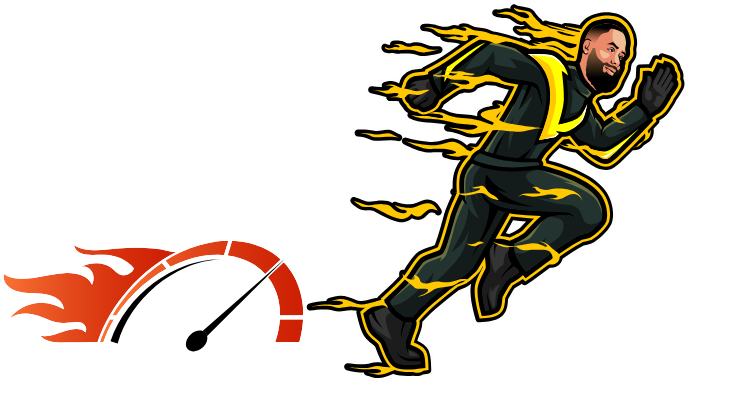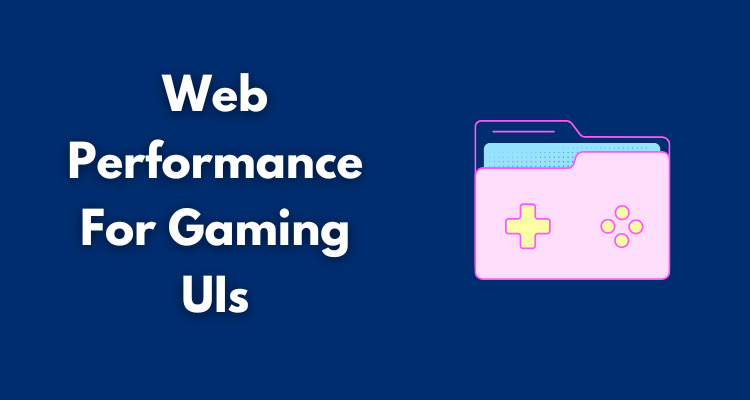Modern web-based gaming is no longer just about visuals. The experience lives and dies on performance. Players notice when a tap feels sluggish, when loading drags, or when animations stutter at the wrong moment.
For developers, that means building a UI that is tuned not only for looks but also for how quickly it reacts to human input. WebGL has raised the bar for visuals, but performance optimization ensures the game feels smooth from the first click to the final interaction.
Table of Contents
TogglePreload and Perceived Speed

One of the strongest levers available for reducing friction in a gaming interface is preloading. Most developers think about preloading assets at the start, but the more effective approach is conditional. Prefetching textures, audio, or shader compilations on hover or in anticipation of common paths makes the interaction feel faster without bloating the initial load.
This is especially noticeable in card and table-style games, where transitions between states are short and repeated. For instance, if you’re designing a real money video poker title, graphics such as win animations can be loaded in anticipation of them being used towards the end of the game, meaning that they will be ready to use when needed, but won’t slow down the start of the game.
When users experience smooth transitions in video poker real money sessions, the perception of quality rises because they feel that the game developers respect their time, and they feel the game has been beautifully designed to ensure a seamless experience. The point is not to load everything upfront, but to recognize which assets need to be on standby for near-instant recall. Game developers who can do this well tend to be particularly successful.
Smooth UI timing matters because it aligns with human psychology. A small delay at the wrong time breaks immersion. Take a look at this Instagram clip of a traditional poker game at a high-pressure moment.
Everything about the interface is totally smooth and fluid. The cards turn with satisfying precision. The animations are perfect. There are no delays, no loading lag. Just like in video poker, these things matter.
The result is a seamless experience that lets both players and the audience focus on the game. Latency-free reveals, snappy feedback, and predictive preloading all reinforce tension in a way that feels natural and satisfying.
Idle Tasks and Smart Scheduling
Once the initial load has been optimized, the next frontier is background scheduling. Browsers now expose APIs like requestIdleCallback for non-critical tasks, but developers often underuse them.
Asset trimming, cache cleanup, and secondary data fetches can all happen in idle periods, rather than blocking the main thread. This ensures the GPU and CPU are free when interaction occurs.
Consider a real-time match where shuffling animations or card reveals must feel instant. Moving non-urgent tasks off the main path prevents frame drops during those micro-moments. A player should never sense that the game is “thinking” when they act.
Input Latency and Smooth Feedback
No area frustrates players more than input lag. On touchscreen devices, even a 100ms delay between tap and feedback feels broken.
Modern engines can mitigate this with GPU compositing layers and reducing forced reflows in CSS. Hardware acceleration should be explicitly verified rather than assumed, because browser differences can impact default behavior.
Developers should also reduce pointer event listeners that stack unnecessarily, since each added listener increases computation on every move or tap.
A single consolidated handler with efficient branching is better than multiple redundant hooks. Input prediction techniques, such as pre-updating UI state while awaiting confirmation from server logic, also help preserve fluidity.
Loading Screens That Respect the Player
Many games use loading screens, and while not ideal, it’s certainly better than not showing the player anything while the content loads. Still, the exact design of the screen often matters more than people realize.
Simple screens or animated placeholders can help, but the most effective trick is minimizing perceived delay by tying loading content to the game’s theme. Even better, reduce the need for loading screens entirely by streaming resources in stages.
Players want to feel that their time is valued. Respecting this principle not only increases satisfaction but also prevents early exits during onboarding.
Practical Checklist for Developers
A performance-first mindset turns theory into practice. The table below offers a short reference that can help teams prioritize optimizations across preload, idle work, and input responsiveness.
| Area | Optimization Focus | Practical Tip |
| Preload | Conditional asset fetch | Prefetch on hover, not on launch |
| Idle Tasks | Smart scheduling | Use requestIdleCallback for cleanup |
| Input Latency | Smooth responsiveness | Consolidate event listeners |
| Loading Screens | Perceived speed | Maintain immersion with themed placeholders |
Putting It All Together
A great gaming UI is not just about flashy effects. It is about performance choices that respect the player’s instinctive expectations. Preloading makes transitions invisible. Idle tasks keep the main thread free for action. Input latency reduction makes every tap or hold feel natural. Combined, these strategies keep users immersed without distraction.
For developers working in WebGL or other advanced web environments, these refinements can mean the difference between a UI that feels clunky and one that feels alive. When every frame and every input is treated with care, performance stops being invisible background work and becomes part of the game’s character itself.
Performance tuning in gaming UIs often overlaps with broader software design choices too. Knowing how application, system, web, and embedded software differ gives extra context for why certain optimization techniques succeed. For a deeper breakdown, explore this overview of different types of software.









